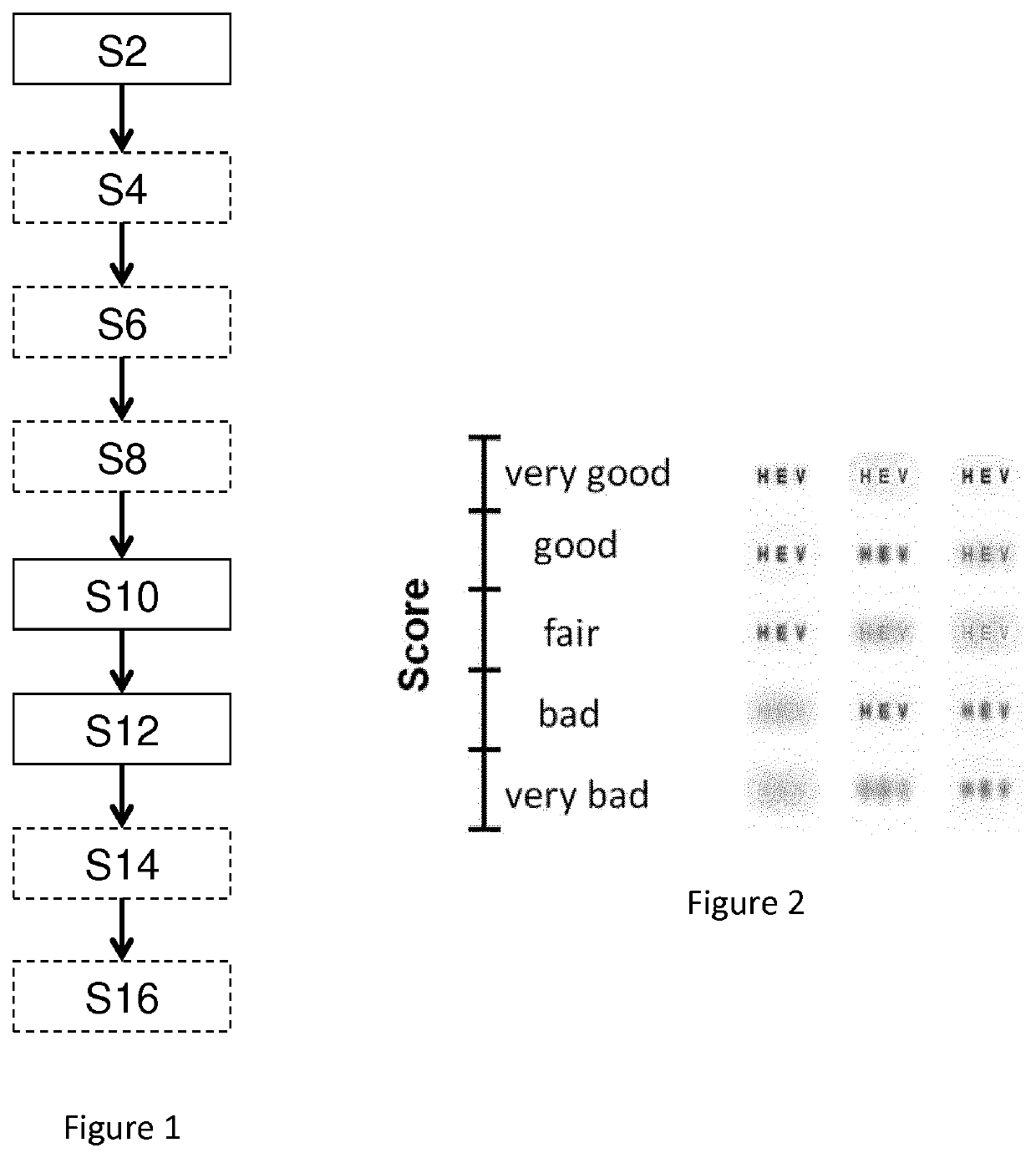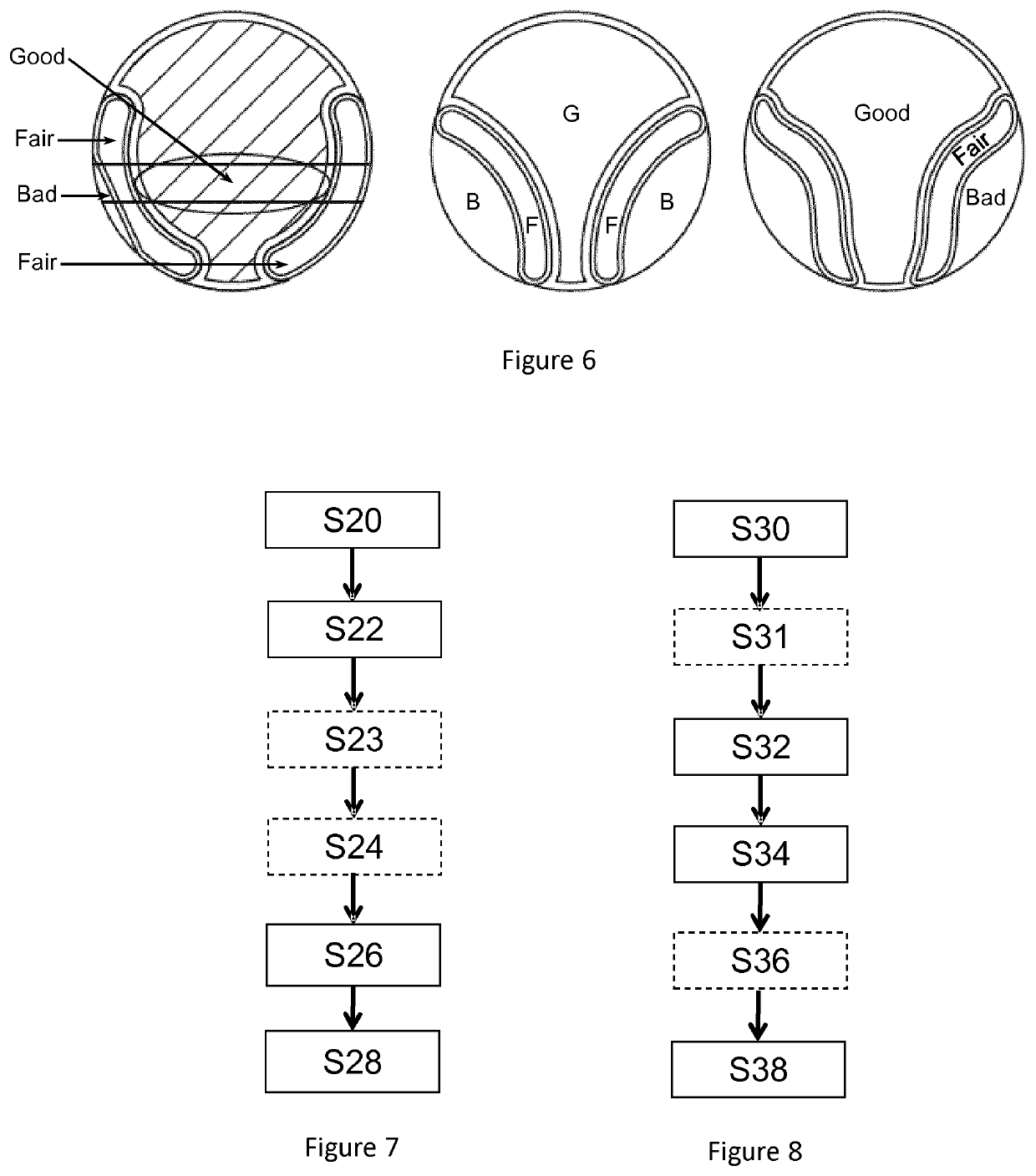Method for determining to which extent a lens design is adapted to a user
a lens design and user technology, applied in the field of determining to which extent a lens design is adapted to a user, can solve the problems of large change and variation, affecting the perception of such optical aberrations, and current methods that are not well adapted to evaluate subjective perception of optical aberrations, so as to achieve fast and easy performance, more relevant and less fluctuation
- Summary
- Abstract
- Description
- Claims
- Application Information
AI Technical Summary
Benefits of technology
Problems solved by technology
Method used
Image
Examples
Embodiment Construction
[0076]The disclosure relates to a method implemented by computer means for determining to which extent a lens design is adapted to a user.
[0077]As illustrated on FIG. 1, the method for determining to which extent a lens is adapted to a user comprises at least:[0078]obtaining a lens design; the lens design representing the variation of optical aberrations as a function of the angular view point;[0079]obtaining a set of subjective values representing the sensitivity of the user to a set of optical aberrations,[0080]correlating the set of subjective values and the lens design based on the set of optical aberrations so as to produce correlation information, advantageously for determining to which extent said lens design is adapted to said user from said correlation.
[0081]Every user reacts differently to each lens design and expresses preferences for certain types of lens design. Such preference can be evaluated by the level of acceptance of a lens design by a user, the level of acceptan...
PUM
 Login to View More
Login to View More Abstract
Description
Claims
Application Information
 Login to View More
Login to View More - R&D
- Intellectual Property
- Life Sciences
- Materials
- Tech Scout
- Unparalleled Data Quality
- Higher Quality Content
- 60% Fewer Hallucinations
Browse by: Latest US Patents, China's latest patents, Technical Efficacy Thesaurus, Application Domain, Technology Topic, Popular Technical Reports.
© 2025 PatSnap. All rights reserved.Legal|Privacy policy|Modern Slavery Act Transparency Statement|Sitemap|About US| Contact US: help@patsnap.com



